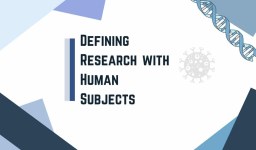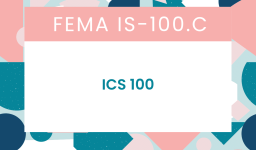- 10th Grade
- Lexile: 1250
Source: The Attack on Pearl Harbor by National Park Service
Assessment Answers
| Question | Answer |
|---|---|
| PART A: Which statement best identifies the central idea of the text? | Increasing tension between the U.S. and Japan resulted in the attack on Pearl Harbor and the entrance of the U.S. into WWII. |
| PART B: Which quote from the text best supports the answer to Part A? | “Japan ignored American protests, and in the summer of 1937 launched a full-scale attack on the rest of China.” (Paragraph 1) |
| PART A: What is the meaning of “culmination” in paragraph 1? | final result |
| PART B: Which detail from paragraph 1 best supports the answer to Part A? | “a decade of deteriorating relations” |
How does paragraph 4 contribute to the development of ideas in the text?
Paragraph 4 contributes to the development of ideas in the text by explaining the measures taken by the United States to address the conflict with Japan and the resulting Japanese perspective that led to the attack on Pearl Harbor.
Specifically, it mentions the diplomatic and economic pressures applied by the United States, including an embargo on oil, as attempts to resolve the Sino-Japanese conflict.
Japan viewed these measures, particularly the oil embargo, as threats to its national security, contributing to the escalation of tensions between the two countries. By the summer of 1941, positions were so entrenched that neither side could retreat without a significant loss of national prestige.
This paragraph is crucial because it highlights the growing tensions and the actions and reactions of both the United States and Japan leading up to the Pearl Harbor attack. It shows the complexity of the diplomatic situation, the failure of negotiations, and how these factors combined to make the conflict seemingly inevitable.
By providing this context, the paragraph helps readers understand the reasons behind Japan’s decision to go to war and attack Pearl Harbor, setting the stage for the United States’ entry into World War II. It thus contributes to the overall narrative of escalating conflict leading to a significant historical event.
Discussion Answers
In the context of the text, how are we changed by war? How did the attack on Pearl Harbor change America? How do people continue to be impacted by the events of that day? Cite evidence from this text, your own experience, and other literature, art, or history in your answer.
In the context of the text, war acts as a catalyst for profound change, both on a national level and in the lives of individuals. The attack on Pearl Harbor serves as a vivid example of how a singular event can dramatically shift a country’s trajectory, unite its people under a common cause, and leave a lasting impact on national identity and policy.
How the Attack on Pearl Harbor Changed America:
The attack on Pearl Harbor fundamentally altered the United States’ stance on World War II, transforming it from a nation divided over the issue of involvement in the war to one united in the pursuit of victory.
Prior to the attack, there was significant debate and isolationist sentiment within the U.S. regarding whether to join the conflict. However, as highlighted in the text, the attack galvanized the American people, leading to a “total commitment to victory over Japan and her Axis partners.”
This marked a pivotal shift in American foreign policy and societal attitude towards the war, demonstrating the power of a single event to unify a nation and catalyze its entry into a global conflict.
Continued Impact of the Events of That Day:
The events of December 7, 1941, continue to resonate in American culture and policy. The memory of the attack is preserved through memorials, literature, films, and educational curriculum, serving as a reminder of the sacrifices made and the importance of vigilance in national security.
The annual commemorations and the National Pearl Harbor Remembrance Day are testament to the lasting legacy of the attack on collective memory and patriotism.
Moreover, the attack on Pearl Harbor has been explored in various forms of literature and art, serving as a narrative device to explore themes of loss, heroism, and the impact of war on human lives.
Works such as John Toland’s “Infamy: Pearl Harbor and Its Aftermath” and movies like “Pearl Harbor” (2001) attempt to capture the complexity and emotional weight of the event.
Personal and Broader Societal Changes:
On a personal level, wars and events like Pearl Harbor often lead to profound changes in individuals, affecting generations through stories of loss, bravery, and resilience.
Families who lost loved ones carry the memory of their sacrifice, and survivors often share their experiences to educate others and ensure the lessons of the past are not forgotten.
From a broader perspective, the attack on Pearl Harbor and subsequent U.S. involvement in World War II led to significant changes in international relations, military strategy, and global power structures.
The war accelerated the United States’ rise as a world superpower and laid the groundwork for the post-war order, including the creation of the United Nations and the beginning of the Cold War.
Conclusion:
War changes us by testing the limits of resilience, unity, and sacrifice. The attack on Pearl Harbor exemplifies how a moment of aggression can awaken a dormant power, unify a divided country, and alter the course of history.
Its impact is felt not just in the immediate response but in the lasting changes to national identity, policy, and the collective consciousness of a nation.
Through literature, art, and commemoration, the legacy of such events continues to influence and shape our understanding of our past, our values, and our place in the world.
In the context of the text, what does it mean to be brave? How were the actions of the soldiers present during the attack on Pearl Harbor examples of bravery? Cite evidence from this text, your own experience, and other literature, art, or history in your answer.
In the context of the text, bravery is characterized by the courage and resolve displayed by individuals in the face of immediate danger and overwhelming odds.
The actions of soldiers and civilians during the attack on Pearl Harbor exemplify such bravery, demonstrating a readiness to defend, protect, and endure despite the surprise and scale of the Japanese assault.
Examples of Bravery During the Attack on Pearl Harbor:
- The text describes the moment the USS Ward engaged and sank a Japanese midget submarine attempting to infiltrate Pearl Harbor, even before the air attack commenced. This act of quick thinking and decisiveness under the threat of unknown danger showcases the bravery of the crew, who took action to protect the harbor despite the peaceful conditions prior to the attack.
- Once the air raid began, American servicemen, despite being caught off guard and without prior warning, responded with whatever means available. The text notes, “After about five minutes, American anti-aircraft fire began to register hits,” indicating the rapid mobilization of U.S. forces under fire to defend their posts and fellow servicemen.
- The narrative also mentions Army Air Corps pilots who managed to take off in a few fighters and engage the enemy, shooting down several Japanese planes. This initiative, taken under chaotic conditions and against overwhelming odds, is a profound display of bravery.
Bravery in Literature, Art, and History:
Bravery in the face of war and conflict is a recurring theme across various forms of literature and art. For example, in Ernest Hemingway’s “For Whom the Bell Tolls,” the protagonist, Robert Jordan, displays bravery as he fights in the Spanish Civil War, demonstrating both physical courage and moral conviction.
Similarly, the famous photograph “Raising the Flag on Iwo Jima” captures a moment of bravery and determination during World War II, symbolizing the resolve and courage of American servicemen.
Personal experiences and family stories often highlight individual acts of bravery. For instance, veterans sharing their experiences in combat or civilians recounting their actions during times of crisis provide insight into the human capacity to act courageously and selflessly for the greater good.
Bravery, in the context of the attack on Pearl Harbor and beyond, is the manifestation of courage in the face of dire situations. It is not merely the absence of fear but the willingness to confront fear, danger, and uncertainty for a cause greater than oneself.
The soldiers at Pearl Harbor, through their actions, exemplify this by responding to the attack with whatever means they had, protecting their fellow servicemen, and doing their duty under extraordinary circumstances.
Their bravery, along with that depicted in literature, art, and personal narratives, serves as a testament to the enduring spirit and resilience of individuals when faced with the gravest of threats.
In the context of the text, how do people face death? The attack on Pearl Harbor resulted in excessive loss of life – how do you think soldiers faced this? How do we continue to honor those deceased soldiers today? Cite evidence from this text, your own experience, and other literature, art, or history in your answer.
In the context of the text, people face death with a mix of bravery, duty, and often an acute awareness of the fragility of life. The attack on Pearl Harbor, which resulted in a significant loss of life, presents a scenario where soldiers faced death both as an immediate threat and as a sacrifice for a greater cause.
The text underlines the suddenness and severity of the attack, with descriptions of battleships like the USS Arizona and the USS Oklahoma being hit and sinking, leading to the loss of thousands of lives within minutes.
How Soldiers Faced Death During the Attack:
Soldiers and sailors at Pearl Harbor faced death with remarkable bravery and a commitment to their duty. The attack was a surprise, leaving little time for preparation or contemplation. Yet, as the text indicates, the immediate response by military personnel—to man anti-aircraft guns, attempt to get aircraft into the air, and try to save trapped or wounded comrades—shows a profound commitment to duty in the face of imminent death.
This reaction highlights a deeply ingrained sense of responsibility and courage, knowing the odds were against them but choosing to fight back and protect their fellow servicemen and their base.
Honoring the Deceased Soldiers Today:
The deceased soldiers of Pearl Harbor and other conflicts are honored in various ways today, both in formal ceremonies and through public memory and art. Memorials such as the USS Arizona Memorial at Pearl Harbor serve as physical sites of remembrance, where individuals can pay their respects to those who lost their lives.
These memorials ensure that the sacrifice of these individuals is never forgotten and that future generations can reflect on the costs of war.
Annual commemorations and moments of silence, such as those on National Pearl Harbor Remembrance Day, provide opportunities for collective reflection and gratitude for the sacrifices made by military personnel. These observances also serve as educational moments, reminding society of the importance of peace and the high price of freedom.
Literature, film, and art play significant roles in keeping the memory of these soldiers alive, offering narratives that capture the human aspect of war, the individual stories of bravery, and the somber reality of sacrifice.
Works such as “Flags of Our Fathers” by James Bradley and movies like “Saving Private Ryan” provide insight into the experiences of soldiers and the impact of their loss on families and communities.
The way soldiers faced death during the attack on Pearl Harbor and how we continue to honor those who died is a testament to the enduring human spirit and the value we place on courage, sacrifice, and remembrance.
The narratives preserved through memorials, literature, and art ensure that these acts of bravery and the lessons learned from such tragic events remain a part of our collective consciousness, guiding future generations in the values of duty, honor, and the preciousness of peace.
In the context of the text, how has America changed over time? How does the attack on Pearl Harbor represent a great shift in America? How did America’s relations with Japan and those of Japanese descent change after the attack on Pearl Harbor?
America has undergone significant changes over time, with the attack on Pearl Harbor serving as a pivotal moment in its history, marking a profound shift in its domestic and foreign policies, societal attitudes, and international relations.
Shift in America Post-Pearl Harbor:
Before the attack on Pearl Harbor, America was largely isolationist, hesitant to become involved in World War II, despite the ongoing conflicts in Europe and Asia. The attack, however, galvanized the nation, shifting public opinion overwhelmingly in favor of entering the war.
This marked a departure from isolationism to active engagement in global affairs, a stance that has largely continued to the present day.
The text highlights the unity and resolve that emerged from the attack, noting how “the American people, previously divided over the issue of U.S. involvement in World War II, rallied together with a total commitment to victory over Japan and her Axis partners.”
Changes in Relations with Japan and Japanese Americans:
The attack on Pearl Harbor drastically altered America’s relations with Japan. From being trade partners, the two nations became immediate enemies in a war that would span the globe.
The aftermath of the attack saw the U.S. government and its citizens view Japan with suspicion and hostility, leading to decisions that would have long-lasting effects on diplomatic and cultural relations.
One of the most profound domestic consequences was the treatment of Japanese Americans. In the wake of Pearl Harbor, fear and prejudice led to the internment of Japanese Americans, a dark chapter in American history that involved forcibly relocating and incarcerating approximately 120,000 people of Japanese ancestry, most of whom were U.S. citizens, in camps across the United States.
This action, driven by fear and suspicion, significantly impacted the Japanese American community, stripping them of their rights, properties, and dignity based on their ethnicity alone.
Long-term Changes:
Over time, America’s relationship with Japan transformed from hostility to partnership. After the war, the U.S. played a significant role in Japan’s reconstruction, leading to a strong alliance focused on economic development, security cooperation, and mutual respect.
This relationship has become one of the most important bilateral partnerships in the world, demonstrating how nations can move from conflict to cooperation.
The treatment of Japanese Americans during the war has led to introspection and legislative apologies, including the Civil Liberties Act of 1988, which formally apologized for the internment and provided reparations to surviving Japanese Americans interned during the war.
This reflection and redress demonstrate America’s capacity for growth and reconciliation, acknowledging past injustices to build a more inclusive society.
The attack on Pearl Harbor represents a significant turning point in American history, marking a shift from isolationism to global engagement and altering the nation’s course in the 20th century. It also precipitated changes in societal attitudes and government policies, particularly regarding civil liberties and ethnic discrimination.
Over the decades, America’s relationship with Japan and its own Japanese American citizens has evolved, reflecting a broader trend towards reconciliation, partnership, and mutual respect, highlighting the nation’s ability to change and adapt over time.
Other Commonlit Answers
- For Gen Z, TikTok Is The New Search Engine CommonLit Answers
- Do Not Go Gentle Into That Good Night Commonlit Answers
- Puritan Laws And Character CommonLit Answers
- Sonnet 18 CommonLit Answers
- A Poison Tree Commonlit Answers
- Greek Society Commonlit Answers
- The Roaring Twenties Commonlit Answers
- I Am Very Real Commonlit Answers
- Should We Scoff At The Idea Of Love At First Sight?




Leave a comment